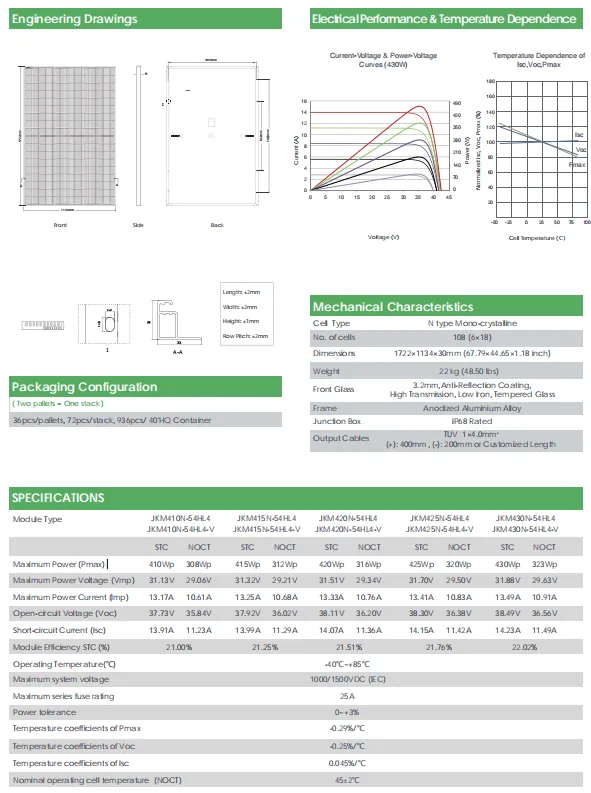Standard Dimensions for Solar Panels and Their Impact on Installation and Efficiency
Understanding Standard Solar Panel Dimensions
Solar energy has become a pivotal component in the quest for renewable energy solutions. Given the increasing demand for clean energy, the importance of understanding solar panel specifications, particularly dimensions, cannot be overstated. This article delves into the standard dimensions of solar panels, helping potential users make informed decisions when considering solar energy systems for their homes or businesses.
The dimensions of solar panels can vary significantly, but most commonly used residential solar panels fall within a certain range. The standard size of a residential solar panel is approximately 65 inches by 39 inches, or about 1.6 meters by 1 meter. This size typically accommodates 60 solar cells, which is a common configuration in residential panels. The surface area of these panels allows for optimal energy capture while maintaining a manageable size that can fit on residential roofs without excessive weight or space issues.
Understanding Standard Solar Panel Dimensions
It's essential to note that while some panels adhere to these dimensions, manufacturers may produce panels that don't conform exactly to these standards. Variations can exist based on the technology used, efficiency ratings, and specific design goals. For instance, high-efficiency panels, which can produce more energy in a smaller footprint, may be slightly smaller in size but can still deliver comparable energy outputs to traditional panels.
standard solar panel dimensions

The thickness of solar panels also plays a role in their overall performance and efficiency. Standard solar panels typically have a thickness of about 1.5 to 2 inches. This thickness contributes to the durability of the panels, allowing them to withstand various weather conditions, from heavy snowfall to hailstorms. A robust design ensures that solar panels will last for decades, providing reliable energy generation far beyond their initial investment.
When evaluating solar panels for installation, understanding the dimensions helps in planning for the physical space not only on the roof but also in the surrounding area required for mounting systems and maintenance access. Additionally, local building codes and regulations may impose restrictions on the total area that can be covered with solar panels, making an understanding of dimensions crucial for compliance.
Furthermore, the orientation and angle of the solar panels significantly affect their efficiency and energy output. Depending on their dimension, manufacturers often recommend specific installation angles to maximize exposure to sunlight throughout the day. This consideration can further dictate the number of panels that can be installed within a given area.
To summarize, the dimensions of solar panels play an essential role in their function, installation, and efficiency. Standard residential solar panels are typically 65 inches by 39 inches, while commercial options may be larger, measuring 77 inches by 39 inches. Understanding these dimensions not only helps in assessing energy needs but also facilitates proper installations and adherence to local regulations. As solar technology continues to evolve, staying informed about panel dimensions will be integral to leveraging the full potential of solar energy in our pursuit of sustainable living.
-
String Solar Inverter: The High-Efficiency Solution for Smart Solar EnergyNewsJul.14,2025
-
Revolutionizing Rooftop Energy with the Power of the Micro Solar InverterNewsJul.14,2025
-
Power Independence with Smart Off Grid Solar Inverter SolutionsNewsJul.14,2025
-
On Grid Solar Inverter: Powering the Future with Smart Grid IntegrationNewsJul.14,2025
-
Monocrystalline Solar Panels: High-Efficiency Power for the Future of Clean EnergyNewsJul.14,2025
-
Bifacial Solar Panel: A Smarter Investment for Next-Generation Energy SystemsNewsJul.14,2025







